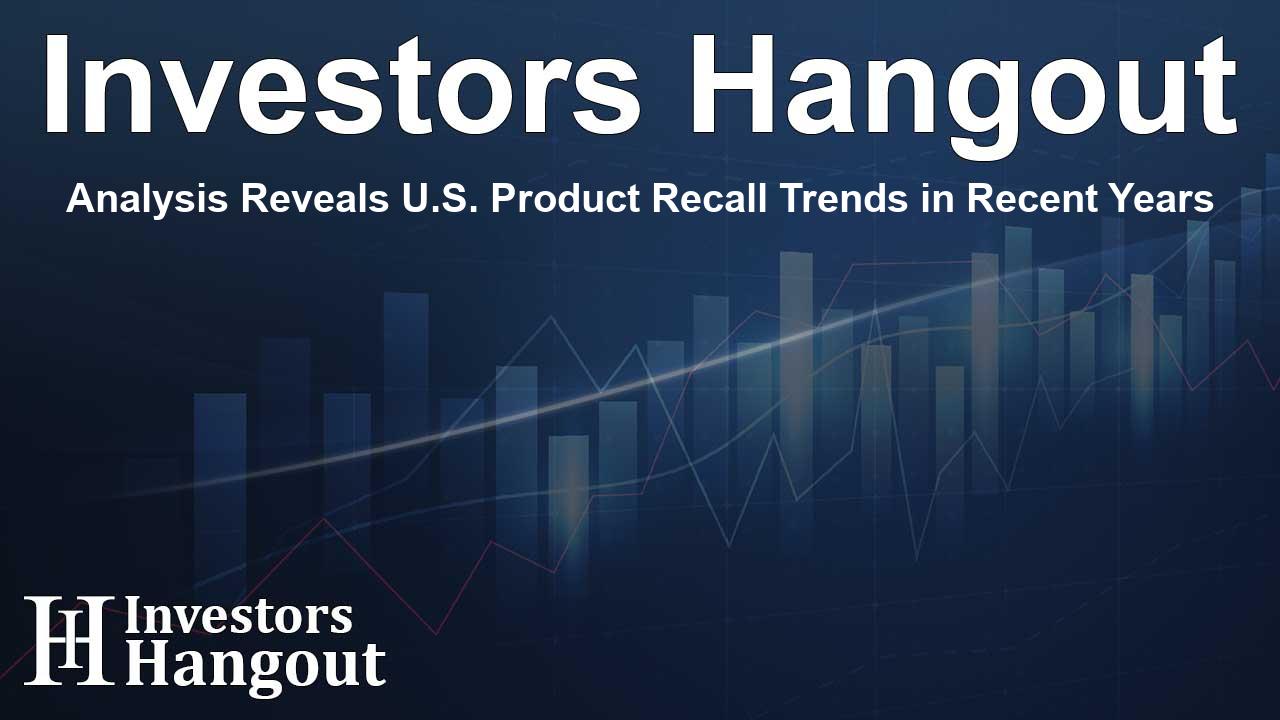Analysis Reveals U.S. Product Recall Trends in Recent Years

Understanding Recent Trends in U.S. Product Recalls
In recent years, the landscape of product recalls in the U.S. has seen significant fluctuations. Most notably, 2024 marked yet another year of elevated recall numbers, registering over 3,200 events—a trend that has remained consistent over two consecutive years. This sizeable figure highlights the importance of safety and compliance across various industries.
Key Insights from Sedgwick's Analysis
According to insights from brand protection experts, the annual report provides a thorough examination of product recalls across five key sectors: automotive, food and beverages, consumer products, pharmaceuticals, and medical devices. The insights reveal that while the total number of recalls remains high, the volume of defective units has dropped significantly to about 680.9 million units in 2024, marking the lowest level since 2015.
The Impact on Different Industries
Each industry faced its own unique set of challenges. Notably, the consumer products sector demonstrated robust activity, achieving its second-highest recall total in eight years. Conversely, the food and drink sector, governed by the U.S. Department of Agriculture (USDA), encountered its second-lowest recall total in the past decade, despite impacting a substantial number of units.
Regulatory Trends and Anticipated Changes
As we examine these significant figures, it’s crucial to consider the regulatory environment that influences these trends. With litigation becoming a noteworthy aspect of the recall process, various organizations began filing lawsuits against regulatory bodies, prompting a closer inspection of regulatory practices. The focus of the Food and Drug Administration (FDA) on ingredient safety and the USDA’s reassessment of its procedures are expected to shape the landscape of product recalls well into the following year.
National Trends in Product Safety
The annual recall index not only serves to document numbers but also underscores critical trends in product safety. In 2024, several high-profile recalls were triggered by alarming safety risks, such as lead contamination in cinnamon products and Listeria in deli meats. These incidents result in increased scrutiny and heightened awareness among consumers about product safety.
Artificial Intelligence and Its Role
Another prominent area of focus is how artificial intelligence (AI) is influencing the recall processes across industries. As technology advances, agencies are tasked with balancing innovation and user safety. The path forward remains uncertain, especially with a new administration potentially shifting regulatory priorities.
Looking Ahead to 2025
As 2025 approaches, questions arise regarding what the future holds for product recalls and safety regulations. Manufacturers are encouraged to remain vigilant in anticipation of evolving regulations. Experts suggest that continuous monitoring of production practices, particularly in terms of batch sizes and traceability, could play a vital role in maintaining standards and mitigating risks.
About Sedgwick and Its Mission
For those unfamiliar, Sedgwick is at the forefront of claims management and loss adjustment, providing tailored solutions to meet the diverse needs of its clients. With a team of over 33,000 professionals operating across 80 countries, the company emphasizes the importance of risk management, enhancing productivity, and protecting brand integrity.
Frequently Asked Questions
What does the Sedgwick Recall Index analyze?
The Sedgwick Recall Index analyzes recall data from multiple industries, offering insights about trends and the impact of regulation on product safety.
Why did the number of defective products drop in 2024?
The decline in defective product recalls could be attributed to manufacturers producing smaller batches and improvements in traceability that aid in identifying defects swiftly.
What key trends were observed in the food and drink sector?
The food and drink industry faced significant recalls due to contamination issues, facing regulatory challenges that shaped its recall practices in 2024.
How might artificial intelligence impact recalls in the future?
AI can enhance tracking and reporting mechanisms, assisting both manufacturers and regulatory agencies in identifying safety issues before they escalate into broader problems.
What should companies do in light of evolving regulations?
Companies are advised to stay proactive in their recall planning and crisis management strategies to adapt to regulatory shifts anticipated in the coming years.
About The Author
Contact Addison Perry privately here. Or send an email with ATTN: Addison Perry as the subject to contact@investorshangout.com.
About Investors Hangout
Investors Hangout is a leading online stock forum for financial discussion and learning, offering a wide range of free tools and resources. It draws in traders of all levels, who exchange market knowledge, investigate trading tactics, and keep an eye on industry developments in real time. Featuring financial articles, stock message boards, quotes, charts, company profiles, and live news updates. Through cooperative learning and a wealth of informational resources, it helps users from novices creating their first portfolios to experts honing their techniques. Join Investors Hangout today: https://investorshangout.com/
The content of this article is based on factual, publicly available information and does not represent legal, financial, or investment advice. Investors Hangout does not offer financial advice, and the author is not a licensed financial advisor. Consult a qualified advisor before making any financial or investment decisions based on this article. This article should not be considered advice to purchase, sell, or hold any securities or other investments. If any of the material provided here is inaccurate, please contact us for corrections.
